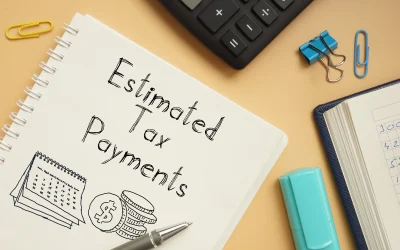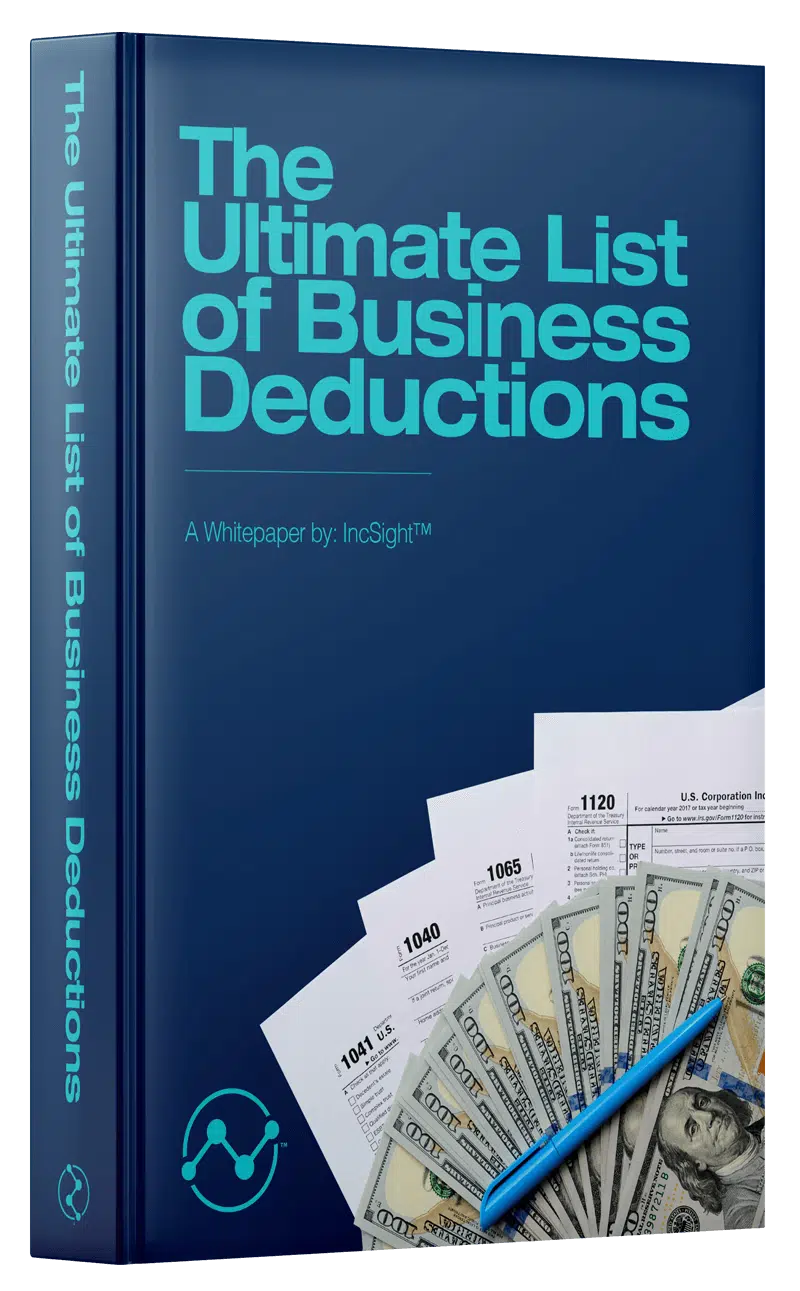One thing I am continually seeing in both our Free Facebook Group and Tax Minimization Program is confusion around business vehicles. Lets take the time here to outline the things you need to know!
We are going to go through a series of decisions you will make when deducting a vehicle in your business.
First things first be sure you have full documentation of the business use of a vehicle. You can not simply put a business logo on a vehicle and think that’s enough to make that vehicle a full business deduction. You need support to back up that business use.
How Do I Prove Business Use and Purpose?
The IRS requires proof of the business miles you are doing which is why a mileage log is highly recommend. Now the IRS does have a couple options for the mileage log.
- Mileage Log for Every Day of the Year
- Three Month Sample
- One Week a Month Sample
If you have a vehicle you are using for business it is absolutely vital that you are keeping a mileage log.
Of course, simply having a mileage log is the first step and then you need documentation to support the actual business purpose of the business miles as well. An easy way to do this is to have mileage right next to your appointment book as your meetings will help support the mileage you had. You likely will have other documents that support your stops as well.
Imagine you had a client meeting at Starbucks. You’ll have on your mileage log a track record from the office to Starbucks but you’ll also have a Starbucks receipt on that day to back it up. Of course that Starbucks receipt will have all of the business purpose/support as we mentioned in the previous page.
Be sure to be tracking both business and personal. Odometer readings are helpful as well.
There are many software options out there that make mileage tracking easier on you.
What is Business Use Percentage (BUP)?
Once you have a mileage log you can determine your business use percentage (BUP) and this is essentially what percentage of the total vehicle use is business related. The calculation is simple:
- Business Use Percentage (BUP) = Business Miles / Total Miles
Example: If you used your vehicle for a total of 15,000 miles in a year and your business miles were 12,000 of that, your BUP would be 80% (12,000 / 15,000).
This number will be important if you are using the “actual” method for your automobile deduction, which we will talk about in just a bit.
Should I Buy or Lease a Vehicle?
This is a question that I want to knock out first but really it is not something that we can advise directly on in a blog post as everyone’s situation will be different. However, I can list some questions that will hopefully guide you in the right direction to make a decision on what makes most sense for your situation. Some things to think about:
- How often do you expect to drive the vehicle?
- Leases have mileage limits which may not work for your line of business but will simply depend on how many miles you plan to put on.
- How many years do you plan on keeping the vehicle?
- If you always want a new vehicle, a lease may be a great option.
- How much do you want your monthly payment to be?
- Lease payments are generally less than a loan. Keep in mind though, you also do not “own” the vehicle.
When looking to get a vehicle this is probably the first thing you need to figure out and hopefully these questions are some guidelines you can use in starting to make that decision.
Should I Put a Vehicle In My Personal or Business Name?
At the end of the day, either or is acceptable. You just need to make sure you are following the correct process either way.
- Personal Name: If you put the vehicle in your personal name and you are an S or C Corp you would use an accountable plan to reimburse yourself for the business use of the vehicle. If you are a sole proprietor or single member LLC you would include the business use on the Schedule C filing.
- Business Name: If you end up having any personal use of the vehicle that is under the business you would add that to your income as an employee (W2) or an owners draw. You can use the lease value rule. Under this rule, you determine the value of an automobile by using its annual lease value.
Generally we say if the vehicle is 100% business use we would recommend using the business name to keep everything clean but if it is less than that then you can do whatever is easiest and most beneficial to you, just remember to reimburse properly depending on your entity setup.
How Do I Write Off a Business Vehicle?
There are two ways you get the determine deduction for the business use of a vehicle, mileage or actual.
- Mileage Deduction
- This one is pretty straight forward. You get a specific tax deduction per mile driven. For 2023 the mileage rates are:
- Business Use: 65.5 Cents per Mile
- Medical Use: 22 Cents per Mile
- Charity Use: 14 Cents per Mile
- Personal or Commuting Use: None
-
With this method, you cannot deduct other expenses related to the vehicle (like maintenance, depreciation, repairs, gas, etc). However you can still deduct parking, tolls and interest expense on the loan (if you purchased the vehicle).
-
Note: If you use your vehicle for business less than 50% of the time, you MUST use the mileage deduction.
- This one is pretty straight forward. You get a specific tax deduction per mile driven. For 2023 the mileage rates are:
- Actual Expenses
- For this option you take the business use percentage (BUP) and multiply that by the total actual expenses for the vehicle. These can include: loan interest (if owned), depreciation (if owned), lease payment, fuel, registrations, car washing, repairs and maintenance, insurance, etc.
- This method complicates things slightly and is where depreciation comes into play.
- Note: If you use the actual expense method you cannot also use mileage deduction. It is one or the other.
Put a spreadsheet together and see which option is going to give you a better deduction. You can use the mileage or actual method whether you lease or purchase a vehicle but there are a few things to consider.
- Leased Vehicle
- Once you pick a method you have to stick with it for the life of the lease.
- Purchased Vehicle
-
If actual method is selected in year 1, you must continue with that in future years.
-
If mileage method is selected in year 1, you can switch to the actual method in future years but must use straight line depreciation.
Remember, when disposing of a purchased vehicle you will have a gain or loss depending on basis (purchase price less depreciation) in the vehicle. For example, lets say you purchased a $75,000 vehicle and depreciated all of it your basis would be $0. If you then sold it for $45,000 you would have a gain of $45,000. This is also where depreciation recapture comes into play.
How Does Depreciation of a Business Vehicle Work?
Awhile back we put together a full Blog post and Small Business Tax Savings Podcast episode on this topic so I recommend you checking that out here, What Do I Need to Know About Purchasing, Deducting, and Depreciating a Business Vehicle?. However, here is a good summary:
- GVWR Matters – But what is GVWR? It stands for Gross Vehicle Weight Rating and the big thing to know here is whether it is over or under 6,000.
- There are various depreciation options available: Bonus Depreciation, Section 179 Expensing, MACRS, etc.
Here is a general guideline to follow:
- Vehicle with GVWR less than 6,000 Pounds
- Year 1
- Bonus Depreciation (If Applicable): $8,000
- Regular Depreciation: $12,200
- Year 2
- Regular Depreciation: $19,500
- Year 3
- Regular Depreciation: $11,700
- Each Year Thereafter
- Regular Depreciation: $6,960
- Note: Section 179 Expensing Not Allowed
- Year 1
- Vehicle with GVWR greater than 6,000 Pounds (SUV or Truck with less than 6 foot bed)
- Section 179 Expensing*: Up to $28,900
- Bonus Depreciation**: 80% for 2023
- Vehicle with GVWR greater than 6,000 Pounds (Truck with 6 foot or bigger bed)
- Section 179 Expensing*: Up to $1,160,000
- Bonus Depreciation**: 80% for 2023
*The total amount you can deduct under Section 179 cannot be more than taxable income of the business.
**Bonus depreciation is 80% for 2023 and will go down to 60% in 2024, 40% in 2025, 20% in 2026, and 0% thereafter.
If you want the vehicle deduction this year you need to both purchase the vehicle and put in service before year-end. “Put in service” means driving at least 1 business mile before 12/31.
Final Take Aways of a Business Vehicle
- You need to first decide if you are going to lease or purchase the vehicle.
- Once you’ve made that decision determine if you are going to put it under your business or personal name.
- Next you need to decide on if you are going to use the mileage or actual method for the deduction.
- If business use is less than 50% you must use the mileage method.
- If business use is 50% or more you can use the mileage or actual method.
- Always keep a mileage log to prove the business use. Even if it is a 100% business use vehicle you should keep a mileage log to backup the business purpose.
- If using actual be sure you are tracking all of the related expenses associated with the vehicle.
Remember, once the calendar rolls over to the New Year, the majority of tax planning opportunities get tossed out the window. You have time now, take a couple hours to strategize and implement so you can ensure when you file your tax return you are paying the least amount in taxes as legally possible!
- The Time Is NOW To Start Paying Less In Taxes. Join Our Tax Minimization Program (w/ Stress Free Bookkeeping Training)!
What you’ll get:
- Library of Tax Strategies, Implementation Guides, Videos, Downloads, etc.
- Stress Free Bookkeeping Training Program
- Ask A Pro – Unlimited email access to our team, it is like having an accountant in your back pocket!
- Monthly Group Trainings
- Private Facebook Group
- Partner Directory








